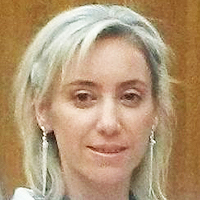Environmental impact assessment of demolition of a building in India-A case study
Published on: 3rd August, 2022
Buildings are demolished, when they outlived their service life, become structurally/functionally unfit, or have been built illegally. In India, an RCC framed, 40-storied high-rise building, with a built-up area of about 75,000 sqm, built without relevant approvals along with lots of violations of building bye-laws, has been demolished. There is nothing new in this demolition process, but its effect on the environment is unavailable. A study has been conducted to understand the environmental impact of this demolition. Based on the main primary construction materials, the embodied energy of this demolished building has been computed as 7.07 GJ/sqm.The civil construction cost of the building was found to be about INR 200 Crores (USD 27 million, assuming a conversion rate of 1 USD 75 INR in the year 2022). Expected GHGs emissions corresponding to this embodied energy were estimated as 42.42 × 103 MT. Energy in the demolition of the building has been computed to be about 8.7 GJ/sqm. The situation, in which this building can be retrofitted and made compliant with local building bye-laws, has been analyzed for its environmental impact.
Determination of antibiotics susceptibility profile of Shigella species isolated from children with acute diarrhea
Published on: 15th December, 2020
OCLC Number/Unique Identifier: 8870458574
Diarrheal diseases continue to be the major cause of morbidity and mortality among children under 5 years. This study aimed to isolate, identify and determining the prevalence, antimicrobial susceptibility profile of Shigella sp associated with acute diarrhea among children in Kano, Northern Nigeria. A cross sectional study was conducted among children less than 5 years diagnosed with acute diarrhea and admitted to paediatric ward of Murtala Muhammad Specialist Hospital Kano. Stool samples from a total of 37 (20 male and 17 female) subjects were used to isolate and identified the pathogen. Antimicrobial susceptibility test was conducted using disc diffusion method. The result showed 12 out of 37 samples were positive for Shigella sp which accounted for 32.4%. Higher incidence of Shigella sp was found among subjects of age between 2 – 3 years. The isolates were 100% resistant to Ampicillin. High resistance was also observed in Amoxicillin (83.33%), Chloramphenicol (58.33%) and Tetracycline (25%). The isolates are 100% sensitive to ciprofloxacin, 66.7% to Levofloxacin and Gentamicin each and 58.33% to Erythromycin. Three (3) isolates were resistance to Ampicillin and Amoxicillin, 5 isolates were resistance to Ampicillin, Chloramphenicol and Amoxicillin while 2 isolates were resistance to Ampicillin, Chloramphenicol, Tetracycline and Amoxicillin. It is concluded that Shigella sp is one of the etiological agent of diarrhea in children. Ciprofloxacin, levofloxacin and Gentamicin are drugs of choice for treating diarrhea caused by Shigella sp.
Corneal stromal abscess and anterior uveitis in a pet goat
Published on: 21st September, 2021
OCLC Number/Unique Identifier: 9278269517
A 3-year-old non-lactating pet goat was referred to our clinic due to advanced ocular lesions and blindness of the left eye (Figure 1). According to the case history, two weeks ago, a grass awn penetrated and injured the eye. The awn was removed by the owner immediately. The following day, the goat had serous ocular discharge and photophobia and was referred to a private veterinarian. The veterinarian did not find any remaining piece of the awn and prescribed tetracaine eye drops to be administered twice a day for the next 4 days. The treatment was not successful and the eye’s condition deteriorated the following days.
Interconnection and Communication between Bone Marrow - The Central Immune System - And the Central Nervous System
Published on: 25th September, 2023
Bone marrow and the central nervous system are both protected by bone. The two systems are interconnected not only structurally but also functionally. In both systems specialized cells communicate through synapses. There exists a tridirectional communication within the neuroimmune network, including the hormonal system, the immune system, and the nervous system. Bone marrow is a priming site for T cell responses to blood-borne antigens including those from the central nervous system. In cases of auto (self) antigens, the responses lead to immune tolerance while in cases of neo (non-self) antigens, the responses lead to neoantigen-specific T cell activation, immune control, and finally to the generation of neoantigen-specific immunological memory. Bone marrow has an important function in the storage and maintenance of immunological memory. It is a multifunctional and very active cell-generating organ, constantly providing hematopoiesis and osteogenesis in finely-tuned homeostasis. Clinical perspectives include mesenchymal stem cell transplantation for tissue repair within the central nervous system.
Role of perioperative plasma D-dimer in intracerebral hemorrhage after brain tumor surgery: A prospective study
Published on: 2nd August, 2022
Background: Intracerebral hemorrhage (ICH) is one of the most feared complications after brain tumor surgery. Despite several factors being considered to influence bleeding, an increasing number of clinical studies emphasize that hemostatic disorders, developed during surgical aggression and tumor status, could explain unexpected ICH. The objective of this prospective study was to evaluate the influence of perioperative D-dimer levels on ICH after brain tumor surgery. Methods: This prospective, observational, 18-month study, at a single third-level hospital, included all consecutive adults operated on brain tumors and postoperative stay in an intensive care unit. Three blood samples evaluated D-dimer levels (A-baseline, B-postoperative and C-24 hours after surgery). The normal range considered was 0-500ng/ml. ICH, as a primary outcome, was defined as bleeding that generates radiological signs of intracranial hypertension either by volume or by mass effect on the routine CT scan 24 hours after surgery. Other tumor features and hemostasis variables were analyzed. Chi-squared and Fisher’s exact test were used in the inferential analysis for qualitative variables and Wilcoxon and T-Test for quantitative ones. P-value < 0.05 was considered significant for a confidence interval of 95%. Results: A total of 109 patients operated on brain tumor surgery were finally included, 69 male (63,30%) and 40 female (36,70%), with a mean age of 54,60 ± 14,75 years. ICH was confirmed in 39 patients (35,78%). Their average of DDimer was A-1.526,70 ng/dl, B-1.061,88 ng/dl, and C-1.330,91 ng/dl (A p0.039, B p0,223 C p0.042, W-Wilcoxon test). The male group was also associated with ICH (p0,030 X2 test). Of those 39 patients with ICH, 30 in sample A (76,9%), 20 in sample B (51,28%) and 35 in sample C (89,74%) had a D-dimer > 500 ng/dl (p0,092, p1, p0,761 X2 test) and the relative risk of developing a postoperative hematoma in this patients was increased 0,36-fold presurgery, 0,25-fold postsurgery and 0,40-fold 24hours after surgery. D-dimer variation, had no statistical significance (p0,118, p0,195, p0,756 T-test). Platelets and prothrombin activity were associated with D-dimer levels only in sample A (p 0,02 and p 0,20, W Wilson). Conclusion: High levels of perioperative D-dimer could be considered a risk marker of ICH after brain tumor surgery. However, more studies would be worthwhile to confirm this association and develop primary prevention strategies for stroke.
Pomaded and unctuous- spindle cell lipoma
Published on: 17th March, 2023
Spindle cell lipoma and pleomorphic lipoma emerge as benign, adipocytic neoplasms representing a morphologic continuum of a singular neoplasm. In addition to myofibroblastoma and cellular angiofibroma, spindle cell lipoma or pleomorphic lipoma configures as a constituent of chromosome 13q/RB1 family of tumors. Initially scripted by Enzinger and Harvey in 1975 with an obsolete terminology of dendritic fibromyxolipoma, aforesaid adipocytic neoplasms articulate an estimated 1.5% of lipomatous tumors. In contrast to conventional lipoma, spindle cell lipoma or pleomorphic lipoma is an uncommonly discerned variant, demonstrating a proportion of 1: 60.
Code of ethics and code of practice: Two relevant documents for an effective and secure operation of tissue establishments
Published on: 19th August, 2022
Tissue banking is an interdisciplinary medical practice more reliant than others in specialized fields and applying knowledge from other branches of science, particularly nuclear sciences. A further difference from other medical disciplines is the urgent necessity to include laws, norms, standards and statutory regulations, which differ in their juridical binding force. Adopting a code of ethics and a code of practice is one of the main tasks to be conducted by a tissue establishment after its founding. The aim is to include in these codes the main ethical principles associated with the different laws, norms, standards, and statutory regulations in force in each country in the field of tissue banking.
The impact of the surgical mask on the relationship between patient and family nurse in primary care
Published on: 11th February, 2021
OCLC Number/Unique Identifier: 8982622312
Objective: In primary care, during treatments, nurses may need to wear surgical masks, namely for control of infection contamination, or to minimize unpleasant odors. The goal of this study is to inspect the effect of nurses wearing the mask on patient perception of the nurse-patient relation.
Methods: A pre-post-test, control-experimental group design was employed with 60 patients treated in family health units. Patients responded to the Patient Satisfaction Questionnaire III (PSQ-III) regarding nurses’ communication, interpersonal manner, technical quality, as well regarding general satisfaction with the encounter. An additional question asked both patients and nurses how long they felt that the visit lasted.
Results: Results show that nurses wearing the surgical mask had significantly negative effects in all dimensions of PSQ-III and increased the perceived visit duration among both nurses and patients.
Conclusion: When a previous relationship exists, nurses wearing the surgical mask in primary care in Portugal negatively affects patient satisfaction with both the patient-nurse relation and the nurses’ technical quality.
Practice implications: Is important the nurse understand this impact to discuss with the colleagues the best strategy to minimize the negative impact to the patient- family nurse relation and manager this situation in the best way to the patient.
The Neuroprotective Role of TERT Influences the Expression of SOD1 in Motor Neurons and Mouse Brain: Implications for fALS
Published on: 14th October, 2023
Amyotrophic lateral sclerosis (ALS) disease is characterized by degeneration of motor neurons and elevation of brain oxidative stress. Previous studies demonstrated the neuroprotective effects of Telomerase reverse transcriptase (TERT) from oxidative stress. We showed that increasing TERT expression in the brain of the Tg hSOD1G93A mouse ALS model attenuated the disease pathology and increased the survival of motor neurons exposed to oxidative stress. How TERT increased the survival of motor neurons exposed to oxidative stress is not yet clear. Here we investigated the consequence of TERT depletion in motor neuron cells under normal and oxidative stress conditions and in mouse brains of TERT knockout mice, on the expression and activity of SOD1 and catalase enzymes. Depletion of mouse TERT caused mitochondrial dysfunction and impaired catalase and SOD1 activity. Compensation with hTERT restored the activity of SOD1. SOD1 expression increased in the brain of TERT KO and in ALS mice and decreased in the brain of WT mice treated with telomerase-increasing compounds. We suggest that the ability of TERT to protect neurons from oxidative stress affects the expression and activity of SOD1, in a TERT-dependent manner, and supports the notion of TERT as a therapeutic target for neurodegenerative diseases like ALS.
Inter-Observer Variability of a Commercial Patient Positioning and Verification System in Proton Therapy
Published on: 6th February, 2017
OCLC Number/Unique Identifier: 7286354964
Purpose:Accurate patient positioning is crucial in radiation therapy. To fully benefit from the preciseness of proton therapy, image guided patient positioning and verification system is typically utilized in proton therapy. The purpose of this study is to evaluate the inter-observer variability of image alignment using a commercially available patient positioning and verification system in proton therapy.
Methods:The VeriSuite patient positioning and verification system (MedCom GmbH, Darmstadt, Germany) provides a six degrees of freedom correction vector by registering two orthogonal x-ray images to digitally reconstructed radiograph (DRR) images that are rendered in real time from the planning computed tomography (CT) images. Six cases of various disease sites, including brain, head & neck, lung, prostate, pelvis, and bladder, were used in this study. For each case, the planning CT images and a daily orthogonal x-ray portal image pair were loaded into the VeriSuite system. The same set of x-ray images and CT images for each case were reviewed and aligned separately by each of the 10 radiation therapist, following the clinical procedure for the corresponding disease site. The resulting correction vectors were then recorded and analyzed.
Results:Our study shows that the inter-observer variation (One standard deviation) in image alignment using the VeriSuite system ranged from 1.2 to 2.0 mm for translational correction and from 0.6 to 1.3 degrees for rotational correction for the six cases. The use of fiducial markers for prostate patient alignment achieved the least inter-observer variation while the bladder case produced the largest.
Conclusions:Inter-observer variation in image alignment could be relatively large, depending on the complexity of patient anatomy, image alignment approach, and user experience and software limitations. Automatic registration and fiducial markers could potentially be used to align patient more accurately and consistently. To ensure adequate tumor coverage in proton therapy, inter-observer variability in patient alignment should be carefully evaluated and accounted for in patient setup uncertainty analysis and treatment planning margin determination.




